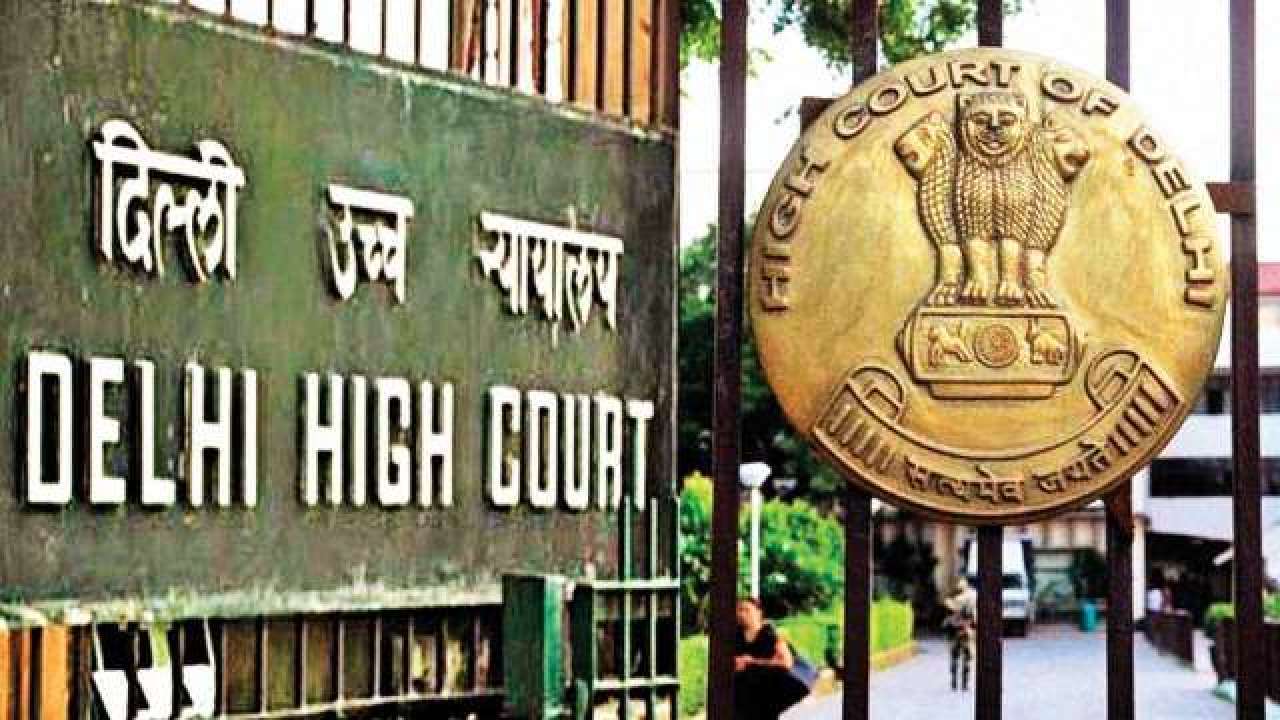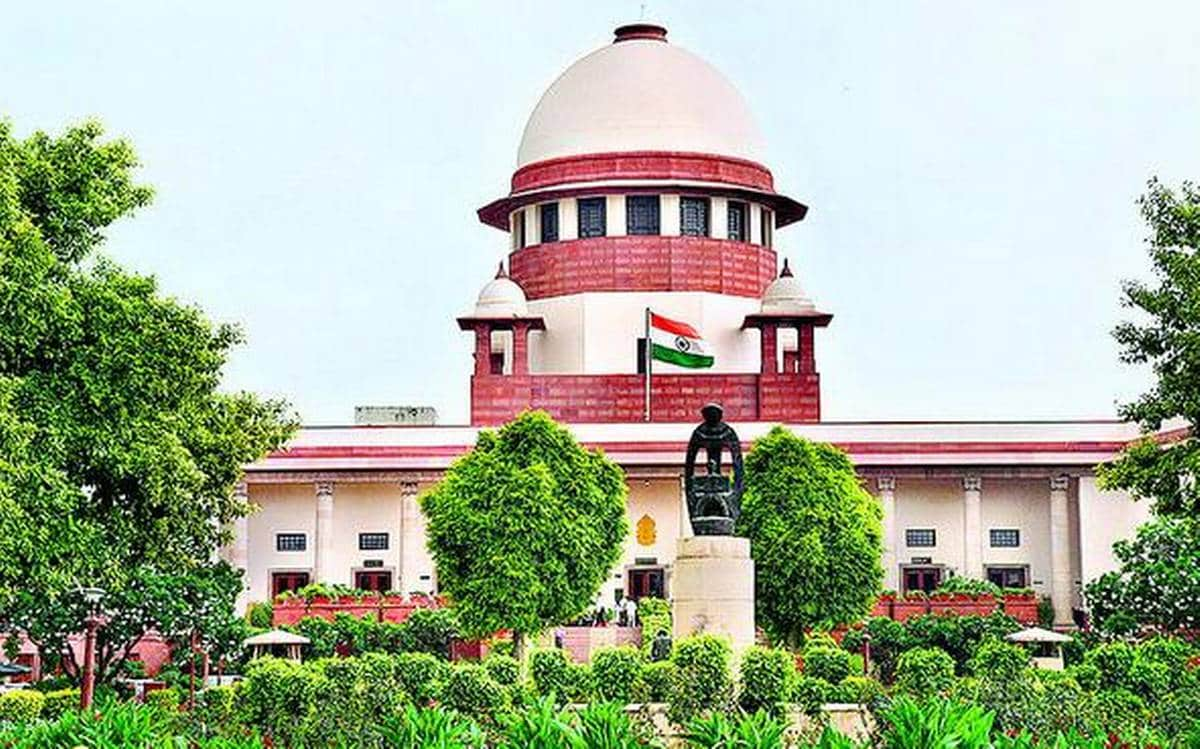In a pragmatic, progressive and pertinent judgment titled Jyoti @ Gayatri v. Rohit Sharma @ Santosh Sharma in CRL. REV.P. 56/2018 and cited in 2022 LiveLaw (Del) 561 that was reserved on 10 April and then finally pronounced on June 10, 2022, the Delhi High Court has observed that the determination of maintenance in matrimonial disputes depends on the financial status of the husband and the standard of living that the wife was accustomed to in her matrimonial home. The Court was dealing with a criminal revision petition that was filed by a wife seeking enhancement of quantum of maintenance awarded by the Principal Judge, Family Court claiming it to be on the lower side. The Court dismissed this petition since it found no valid reason to do so.
To start with, this brief, brilliant, bold and balanced judgment authored by Hon’ble Mr Justice Chandra Dhari Singh sets the pitch in motion by first and foremost putting forth in para 1 that, “The instant criminal revision petition has been filed under Sections 397 and 401 read with Section 482 of the Code of Criminal Procedure, 1973 (hereinafter “Cr.P.C”) by the revisionist seeking enhancement of quantum of maintenance awarded vide Judgment dated 27th November, 2017 passed by learned Principal Judge, Family Court, Central District, Tis Hazari, Delhi (hereinafter “learned Principal Judge”) in MT No. 5861929/2016 claiming it to be on the lower side.”
To put things in perspective, the Bench then while dwelling briefly on the facts of the case envisages in para 2 that, “Brief facts of the case are as follows:
i. The marriage between revisionist and respondent was solemnised on 11th July, 2008 as per the Hindu rites and ceremonies at Delhi. No issue was born from the said wedlock. It is alleged that revisionist was abused, insulted and ill-treated for bringing insufficient dowry by the respondent/husband and his family members. It is further alleged that Respondent is an alcoholic person having affairs with other women. It is also alleged that the respondent and his parents demanded cash amount of Rs. 10 Lacs for supporting the business of the husband/respondent. Since the revisionist failed to bring dowry of Rs. 10 Lacs, she was thrown out of her matrimonial home on 28th October 2008.
ii. The revisionist was totally neglected by the respondent and was unable to maintain herself. She is totally dependent upon her parents. She has filed a petition under Section 125 of the Cr.P.C for her maintenance. Since the respondent started absenting from the proceedings, Court proceeded ex-parte on 11th December 2015.
iii. Vide Judgment dated 27th November 2017, the petition under Section 125 of the Cr.P.C was allowed by the learned Principal Judge, by which the respondent was directed to pay litigation cost of Rs. 11,000/- and maintenance, as follows:
a) Rs. 2,000/- per month from the date of filing of the petition i.e 26th May, 2010 to 25th May, 2015;
b) Rs. 2,500/- per month w.e.f 26th May, 2015 to 27th November, 2017; and
c) Rs, 3,000/- per month w.e.f from 27th November 2017 till such time revisionist gets remarried.”
Needless to say, the Bench then mentions in para 3 that, “Being aggrieved by the inadequate maintenance, awarded by the learned Family Court vide judgment dated 27th November 2017, revisionist has preferred the instant revision petition for the enhancement of the maintenance amount.”
ANALYSIS AND FINDINGS
No doubt, the Bench rightly acknowledges in para 16 that, “It is an admitted fact that marriage between the revisionist and respondent no. 1 was solemnized. But due to some differences between revisionist and respondent no.1, started living separately, pursuant to which revisionist has filed petition under Section 125 of Cr.P.C. The object behind Section 125 of the Cr.P.C is to prevent vagrancy and destitution of wife, minor children and the parents. In the case of Manish Jain Vs. Akanksha Jain, (2017) 15 SCC 801, the Hon’ble Supreme Court has observed as under:
“16. An order for maintenance pendente lite or for costs of the proceedings is conditional on the circumstance that the wife or husband who makes a claim for the same has no independent income sufficient for her or his support or to meet the necessary expenses of the proceeding. It is no answer to a claim of maintenance that the wife is educated and could support herself. Likewise, the financial position of the wife’s parents is also immaterial. The court must take into consideration the status of the parties and the capacity of the spouse to pay maintenance and whether the applicant has any independent income sufficient for her or his support. Maintenance is always dependent upon factual situation; the court should, therefore, mould the claim for maintenance determining the quantum based on various factors brought before the Court.””
While citing another relevant case law, the Bench then notes in para 18 that, “In the case of Bharat Hedge vs Shrimati Saroj, (2007) SCC OnLine Del 622, Co-ordinate Bench of this Court has laid down certain factors/guidelines to be considered for determining the maintenance. The relevant paragraphs are as follows:
“8. Unfortunately, in India, parties do not truthfully reveal their income. For self employed persons or persons employed in the unorganized sector, truthful income never surfaces. Tax avoidance is the norm. Tax compliance is the exception in this country. Therefore, in determining interim maintenance, there cannot be mathematical exactitude. The court has to take a general view. From the various judicial precedents, the under noted 11 factors can be culled out, which are to be taken into consideration while deciding an application under Section 24 of the Hindu Marriage Act. The same are:
1. Status of the parties.
2. Reasonable wants of the claimant.
3. The independent income and property of the claimant.
4. The number of persons, the non applicant has to maintain.
5. The amount should aid the applicant to live in a similar life style as he/she enjoyed in the matrimonial home.
6. Non-applicant’s liabilities, if any.
7. Provisions for food, clothing, shelter, education, medical attendance and treatment etc. of the applicant.
8. Payment capacity of the non applicant.
9. Some guess work is not ruled out while estimating the income of the non applicant when all the sources or correct sources are not disclosed.
10. The non applicant to defray the cost of litigation.
11. The amount awarded u/s. 125 Cr.PC is adjustable against the amount awarded u/s. 24 of the Act.””
Most significantly, the Bench then lays bare in para 19 what forms the cornerstone of this learned judgment wherein it is postulated that, “The intent behind granting interim/permanent alimony is to ensure that the dependent spouse is not reduced to destitution or vagrancy on account of the failure of the marriage, and not as punishment to the other spouse. The financial capacity of the husband, his actual income with reasonable expenses for his own maintenance, and dependant family members whom he is obliged to maintain under the law, liabilities if any, would be required to be taken into consideration, to arrive at the appropriate quantum of maintenance to be paid. It is settled law that balance and equity must carefully be drawn between all relevant factors. The test of determination of maintenance in matrimonial disputes depends on the financial status of the respondent and the standard of living that the revisionist was accustomed to in her matrimonial home.”

Be it noted, the Bench then points out in para 21 that, “The plain import of sub-section (1) of Section 127 Cr.P.C is that a provision is made therein for an increase or decrease of the allowance consequent on a change in the circumstances of the parties at the time of the application for alteration of the original order of maintenance. It must be shown that there has been a change in the circumstances of husband or of the wife.”
While citing a very relevant case law, the Bench then states in para 22 that, “In the case of Bhagwan Dutt vs Kamala Devi, (1975) 2 SCC 386, the Hon’ble Supreme Court has held that word “circumstance” as appearing in Section 127 Cr.P.C has been interpreted by Hon’ble Apex Court by observing that circumstances as contemplated in Section 127 (1) Cr.P.C must include financial circumstances and in that view, the inquiry as to the change of circumstances must extend to a change of financial circumstances. The relevant portion is reproduced herein:
“20. There is nothing in these provisions to show that in determining the maintenance and its rate, the Magistrate has to inquire into the means of the husband, alone, and exclude the means of the wife altogether from consideration. Rather, there is a definite indication in the language of the associate Section 489(1), that the financial resources of the wife are also a relevant consideration in making such a determination. Section 489(1) provides inter alia, that:
“on proof of a change in the circumstances of any person receiving under Section 488 a monthly allowance, the Magistrate, may make such alteration in the allowance as he thinks fit.”
The “circumstances” contemplated by Section 489(1) must include financial circumstances and in that view, the inquiry as to the change in the circumstances must extend to a change in the financial circumstances of the wife.””
While citing an Apex Court ruling, the Bench then observes in para 25 that, “While determining the quantum of maintenance, the Hon’ble Supreme Court in Jasbir Kaur Sehgal v. District Judge Dehradun & Ors., (1997) 7 SCC 7 has held as follows:-
“8. … The court has to consider the status of the parties, their respective needs, the capacity of the husband to pay having regard to his reasonable expenses for his own maintenance and of those he is obliged under the law and statutory but involuntary payments or deductions. The amount of maintenance fixed for the wife should be such as she can live in reasonable comfort considering her status and the mode of life she was used to when she lived with her husband and also that she does not feel handicapped in the prosecution of her case. At the same time, the amount so fixed cannot be excessive or extortionate…””
Most remarkably, the Bench then concedes in para 27 that, “The change of circumstances referred to in sub-section (1) of Section 127 Cr.P.C. is a comprehensive phrase which also includes change of circumstances of husband. The amount of maintenance once fixed under section 125(1) Cr.P.C. is not something which can be taken to be a blanket liability for all times to come. It is subject to variation on both sides. It can be increased or decreased as per the altered circumstances. Further, the circumstances alleged by the revisionist/wife already existed at the time of passing the original maintenance judgment; therefore, proof of such circumstances cannot form the basis for altering the amount of maintenance under sub-section (1) of Section 127 Cr.P.C. In the instant case, there is nothing on record to prove that there has been change in circumstances that would warrant an enhancement in maintenance.”
Quite forthrightly, the Bench then points out in para 28 that, “In the present case, the revisionist submitted that the respondent is man of sufficient means and earning Rs. 82,000/- per month, but she has not placed on record any documents to assess his exact income and to establish that the he is earning such handsome amount of money. Even this Court does not find any material(s) on record to ascertain the exact income of the respondent nor is there any change in circumstances.”
Quite significantly, the Bench then holds in para 29 that, “The revisionist has also not been able to point out any perversity in the impugned judgment dated 27th November 2017. The Court below i.e. learned Principal Judge, while disposing of the petition under Section 125 of the Cr.P.C, has taken into consideration entire facts and documents/materials on record while directing the respondent to pay monthly maintenance of Rs. 2,000/- per month from the date of filing of the petition i.e 26th May, 2010 to 25th May, 2015; Rs. 2,500/- per month w.e.f 26th May, 2015 to 27th November, 2017; and Rs, 3,000/- per month w.e.f from 27th November 2017 till such time revisionist gets remarried and to clear the arrears within one year, in case of default, he shall be liable to pay penal interest @ 18% p.a.”
Conclusion
Most commendably, the Bench then mandates in para 31 that, “Keeping in view the above observations, this Court does not find any cogent reason to interfere with the impugned judgment dated 27th November, 2017 passed by learned Principal Judge, Family Court, since neither there is any illegality, impropriety or error apparent on record nor any change in circumstances.”
As a corollary, the Bench then puts forth in para 32 that, “Accordingly, the instant Criminal Revision Petition is dismissed for the reasons stated above.”
Going ahead, the Bench then holds in para 33 that, “Pending application, if any, also stands disposed of.”
Finally, the Bench then concludes by directing in para 34 that, “The judgment be uploaded on the website forthwith.”
On the whole, this extremely commendable, cogent, composed and convincing judgment by the Delhi High Court makes it absolutely clear that the Court must always consider the financial status of the husband and changed circumstances while determining maintenance in matrimonial disputes. The Delhi High Court also made it crystal clear that the Courts have also to take into account the standard of living that the wife was accustomed to in her matrimonial home. Of course, there can certainly be just no denying or disputing it!
Sanjeev Sirohi, Advocate


 Opinion3 years ago
Opinion3 years ago
 Entertainment8 years ago
Entertainment8 years ago
 Entertainment8 years ago
Entertainment8 years ago
 Fashion8 years ago
Fashion8 years ago
 Opinion4 years ago
Opinion4 years ago
 Entertainment8 years ago
Entertainment8 years ago
 Politics8 years ago
Politics8 years ago
 Entertainment8 years ago
Entertainment8 years ago









